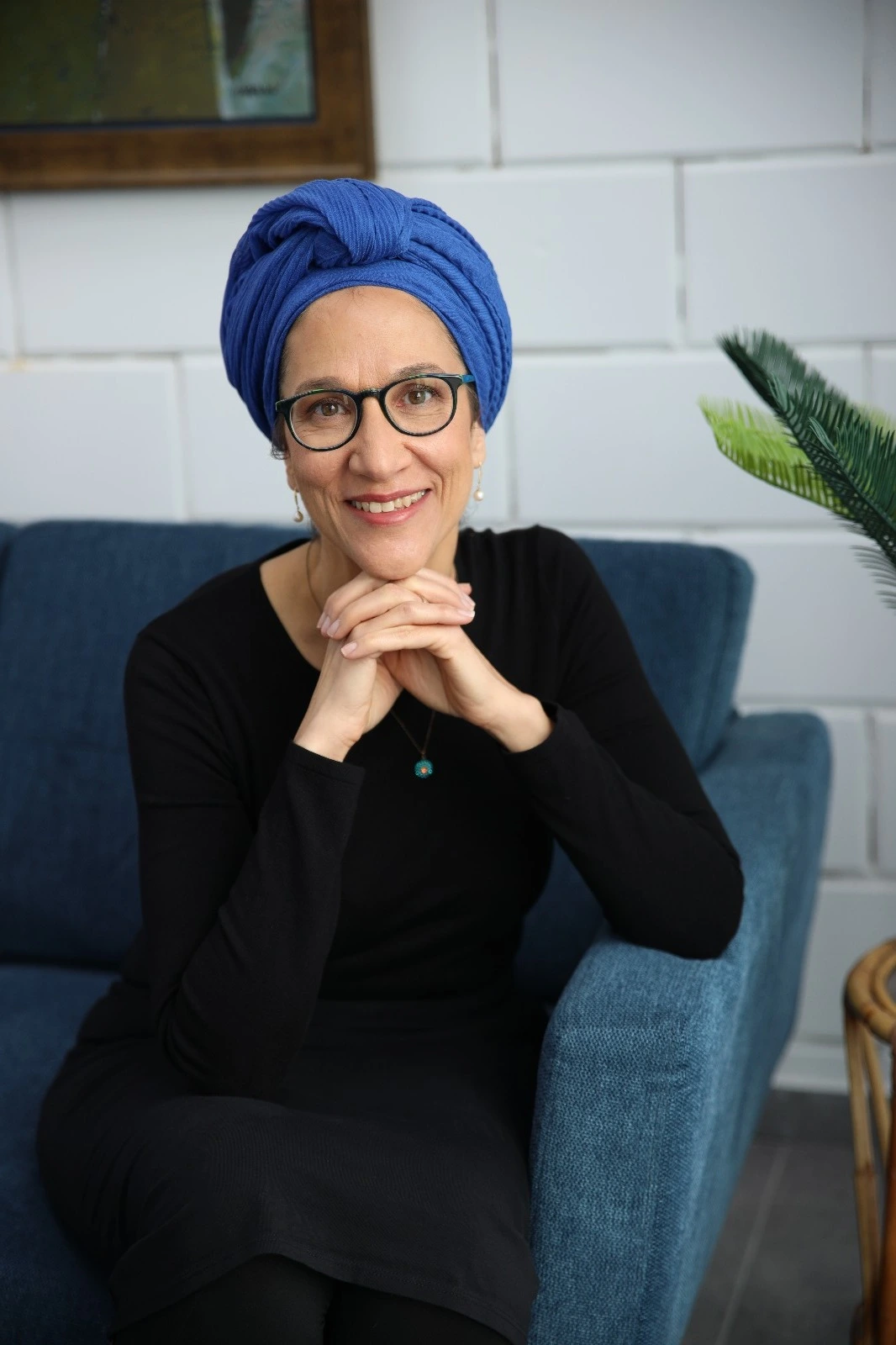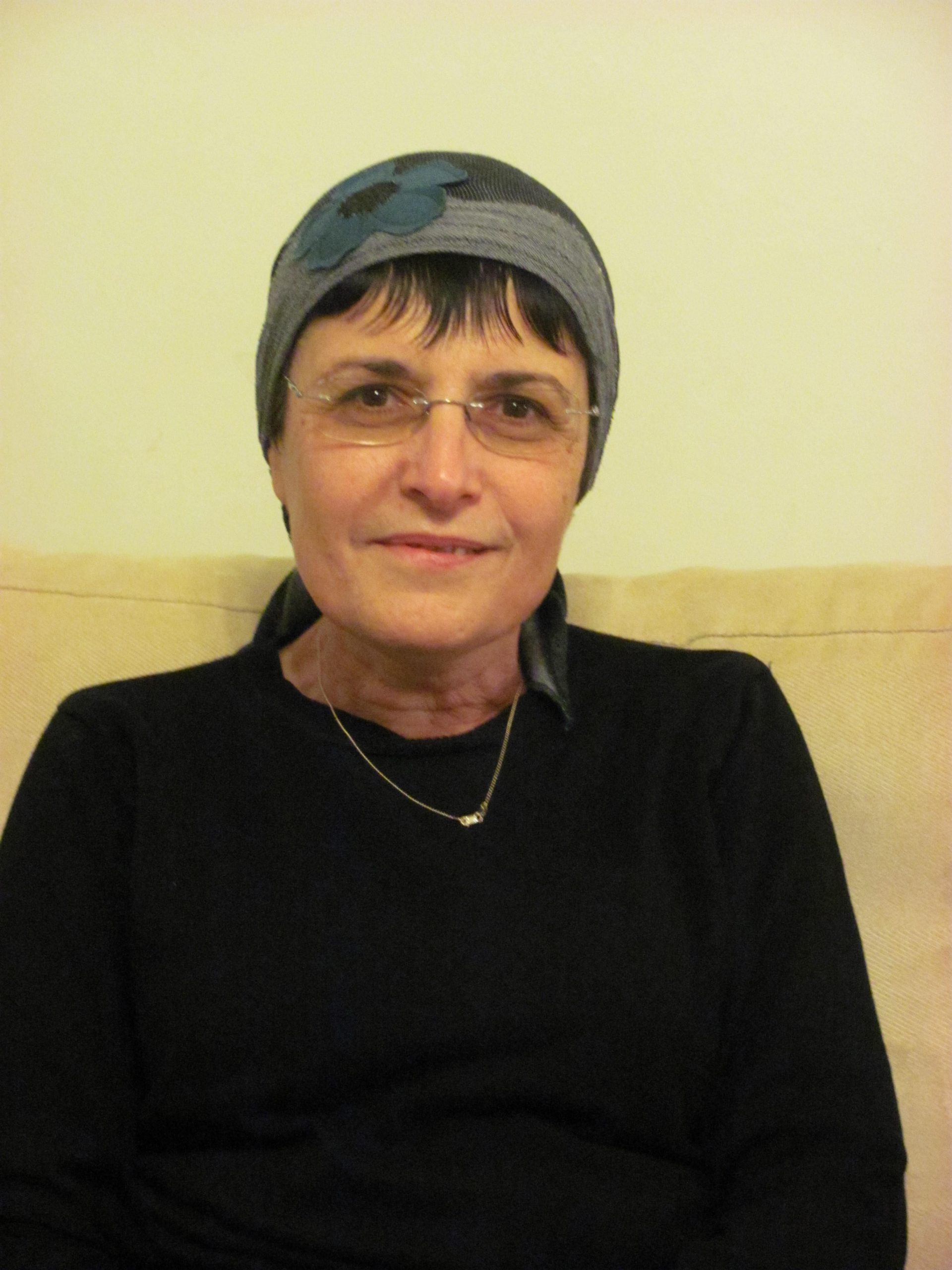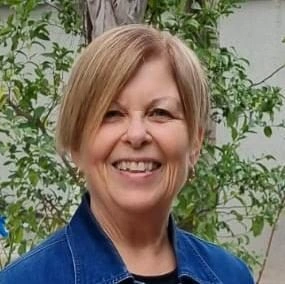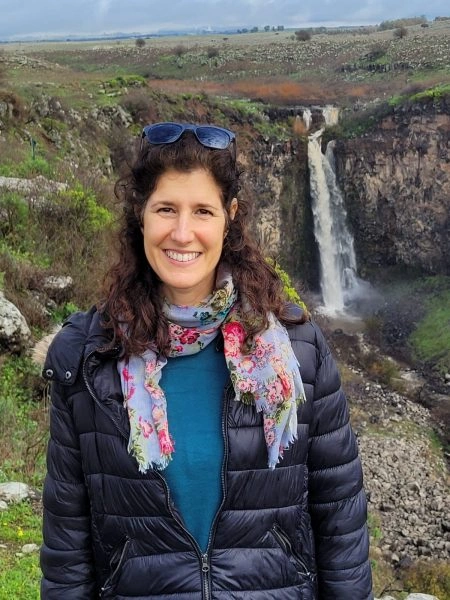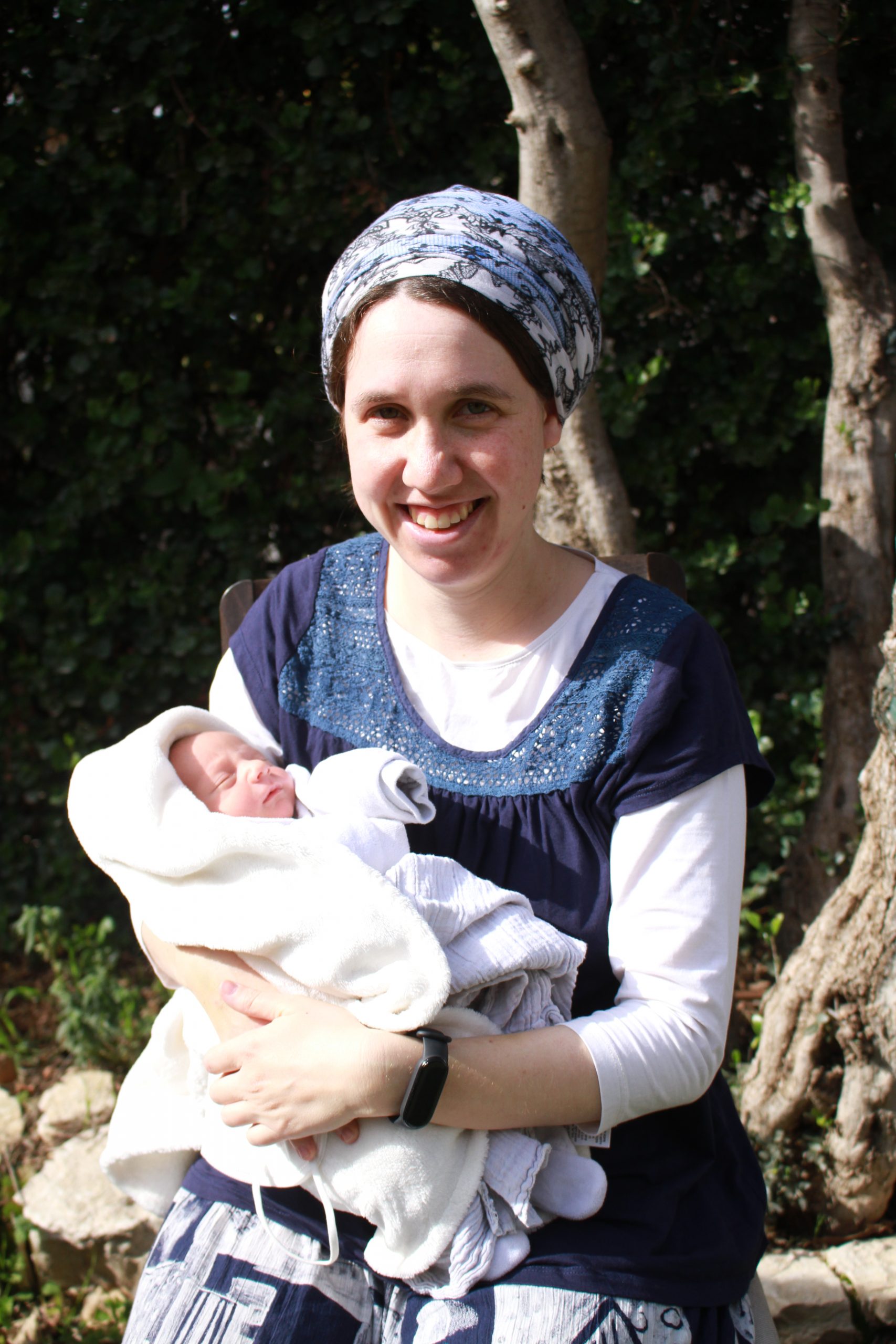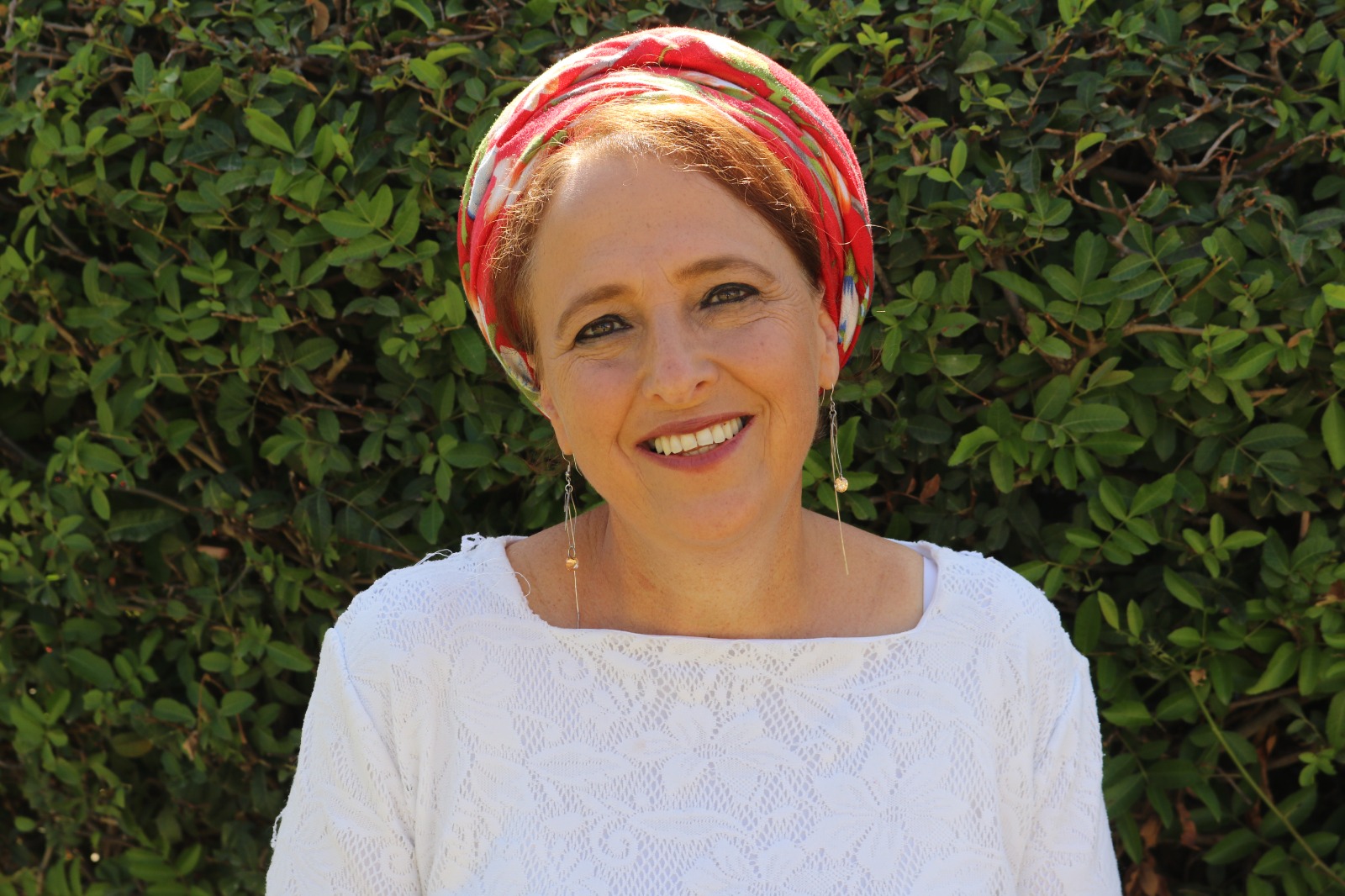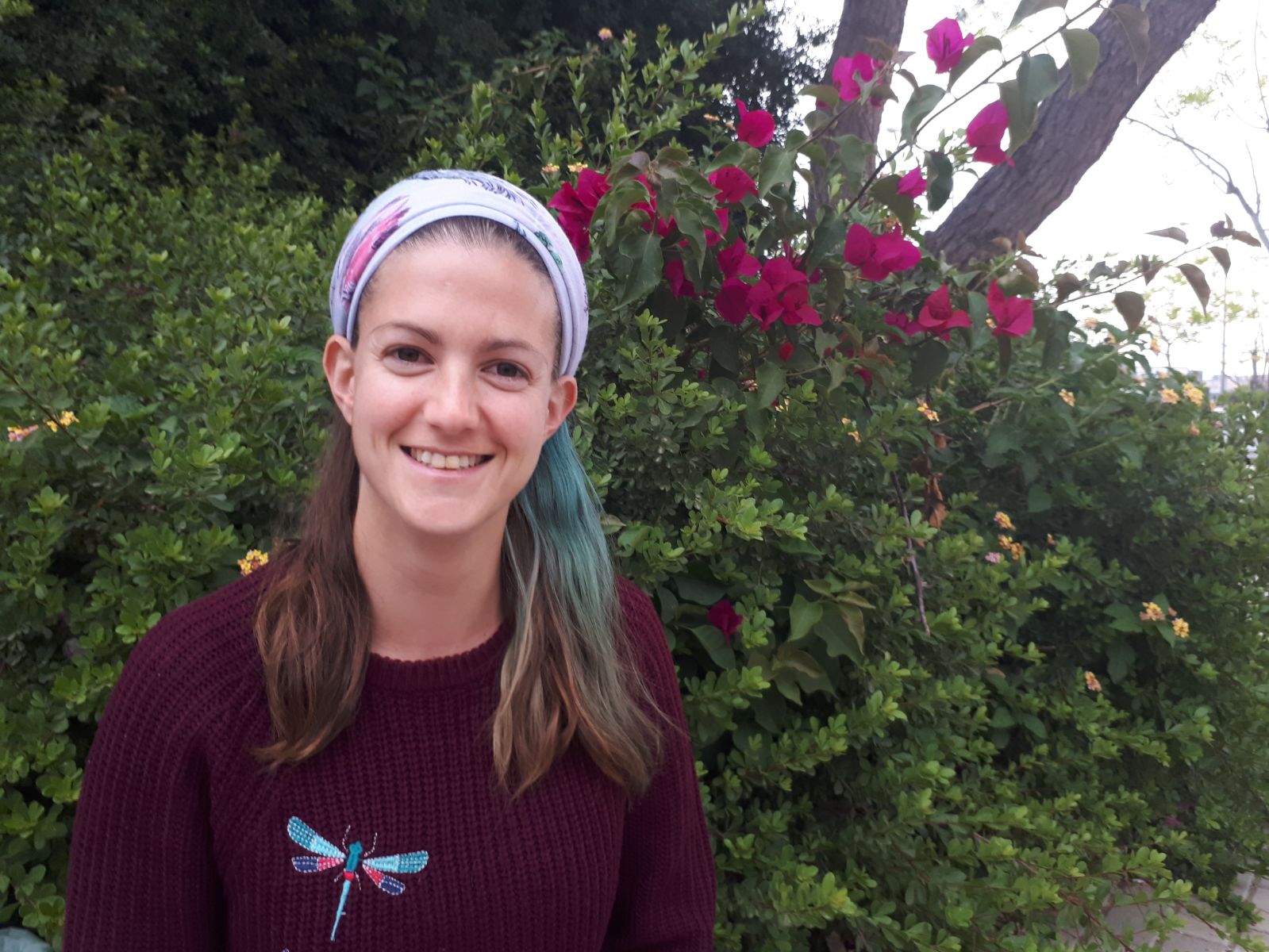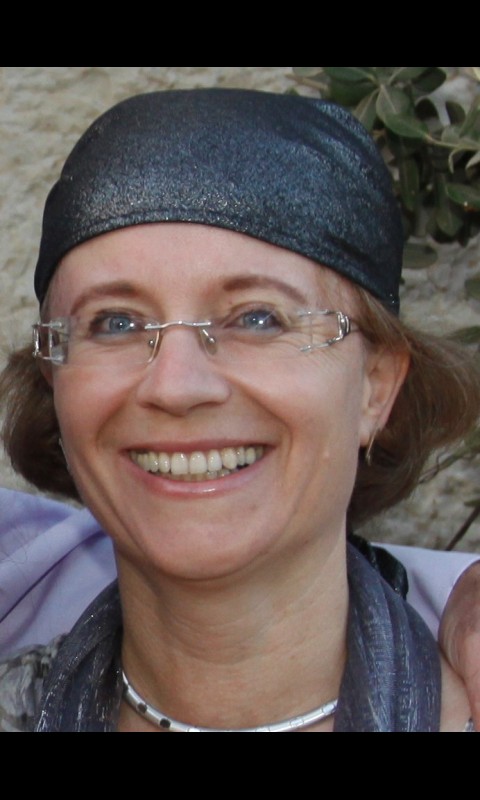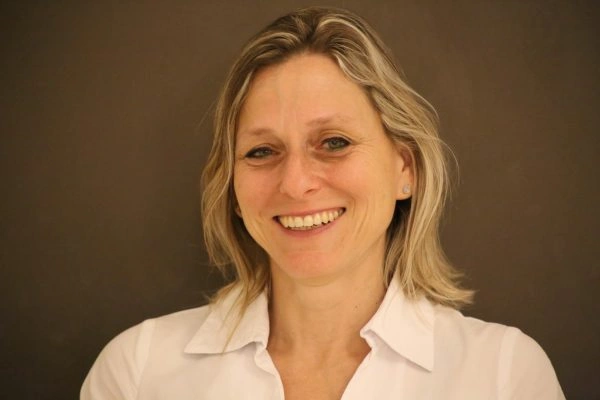האם עובר בהמה בן ט’ שנשחט אמו נחשב כחלק בגוף אמו וניתר בשחיטת אמו או לא? אם הנחשב כחלק מאמו לעניין שחיטה, האם נחשב גם ככה לעניינים אחרים (טומאה)? מה הסטטוס של החלב של העובר? האם אסור באכילה כמו חלב אמו או לא? האם בן פקועה מותר רק לפני ששם רגליו על הקרקע או האם מותר לכל חייו? רב כהנא מבין שיש על עניין זה מחלוקת במשנה. איך פוסקים?
רוצים להקדיש למידה? התחל כאן:
העמקה
רוצה להבין מה באמת קורה מתחת לפני השטח של הסוגיה?
שיעורים, פודקאסטים והרחבות של מיטב המורות שלנו יפתחו לך עוד זוויות וכיווני חשיבה.
חדשה בלימוד הגמרא?
זה הדף הראשון שלך? איזו התרגשות עצומה! יש לנו בדיוק את התכנים והכלים שיעזרו לך לעשות את הצעדים הראשונים ללמידה בקצב וברמה שלך, כך תוכלי להרגיש בנוח גם בתוך הסוגיות המורכבות ומאתגרות.
פסיפס הלומדות שלנו
גלי את קהילת הלומדות שלנו, מגוון נשים, רקעים וסיפורים. כולן חלק מתנועה ומסע מרגש ועוצמתי.
חולין עה
בשחיטה יבישתא ודלא כרבי שמעון
Rabbi Shimon ben Lakish answers: The baraita is referring to a case where the slaughter of the mother was dry, i.e., where no blood was emitted, and therefore, even the mother was not rendered susceptible to ritual impurity. And the baraita is not in accordance with the opinion of Rabbi Shimon, who maintains that the flesh of a slaughtered animal is rendered susceptible to ritual impurity by virtue of the fact that it is permitted for consumption, regardless of whether or not it came into contact with blood or other liquids.
מאן תנא עבר בנהר הוכשר הלך לבית הקברות נטמא אמר רבי יוחנן רבי יוסי הגלילי היא דתניא רבי שמעון בן אלעזר אומר משום רבי יוסי הגלילי מטמא טומאת אוכלים וצריך הכשר וחכמים אומרים אינו מטמא טומאת אוכלין מפני שהוא חי וכל שהוא חי אינו מטמא טומאת אוכלין
The Gemara asks: Who is the tanna who taught this baraita: If a ben pekua grew up and passed through a river, it was thereby rendered susceptible to impurity, and therefore if it went from there to a cemetery, it is rendered impure? Rabbi Yoḥanan said: It is the opinion of Rabbi Yosei HaGelili, as it is taught in a baraita that Rabbi Shimon ben Elazar says in the name of Rabbi Yosei HaGelili: The flesh of a ben pekua can become impure with the ritual impurity of food, but it first needs to be rendered susceptible to ritual impurity by coming in contact with liquid. But the Rabbis say: It cannot become impure with the ritual impurity of food because it is alive, and any live animal cannot become impure with the ritual impurity of food, even if it is permitted for consumption.
ואזדא רבי יוחנן לטעמיה דאמר רבי יוחנן רבי יוסי הגלילי וב”ש אמרו דבר אחד
The Gemara notes: And Rabbi Yoḥanan follows his standard line of reasoning, as Rabbi Yoḥanan says that Rabbi Yosei HaGelili and Beit Shammai said the same thing, i.e., they both hold that even a live animal can become impure with the ritual impurity of food.
רבי יוסי הגלילי הא דאמרן ב”ש דתנן דגים מאימתי מקבלין טומאה ב”ש אומרים משיצודו וב”ה אומרים משימותו רבי עקיבא אומר משעה שאין יכולין לחיות
The opinion of Rabbi Yosei HaGelili is that which we stated in the baraita. The opinion of Beit Shammai is as we learned in a mishna (Okatzin 3:8): With regard to fish, from when are they susceptible to impurity as food? Beit Shammai say: From when they are caught in a trap, as at this point they are considered food, since they do not require slaughter. And Beit Hillel say: From when they die. Rabbi Akiva says: From when they are no longer able to live.
מאי בינייהו אמר רבי יוחנן דג מקרטע איכא בינייהו
The Gemara analyzes that mishna: What is the difference between the opinions of Rabbi Akiva and Beit Hillel? Rabbi Yoḥanan said: The difference between them is the case of a convulsing fish. Rabbi Akiva holds that such a fish can already become ritually impure, while Beit Hillel require it to have actually died.
בעי רב חסדא נולדו בדגים סימני טרפה מהו תיבעי למ”ד טרפה חיה ותיבעי למ”ד טרפה אינה חיה
Rav Ḥisda raises a dilemma: According to Rabbi Akiva, if symptoms of a tereifa developed in a fish, e.g., a perforation in the intestines, which will certainly result in the animal’s death (see 42a), what is the halakha? Can it already be rendered ritually impure as if it were now dead? The Gemara clarifies: One can raise this dilemma according to the one who says that an animal that is a tereifa can live, i.e., it will not necessarily die within a year, and one can raise this dilemma according to the one who says that a tereifa cannot live, but will die within a year.
תיבעי למ”ד טרפה חיה בהמה הוא דנפישא חיותה אבל דגים דלא נפישא חיותייהו לא או דילמא אפי’ למ”ד טרפה אינה חיה הני מילי בהמה דיש במינה שחיטה אבל דגים דאין במינן שחיטה (אימא) לא תיקו
The Gemara elaborates: One can raise this dilemma according to the one who says that a tereifa can live, as perhaps that opinion is limited to an animal, as an animal has a strong life force, and it could live despite such symptoms. But with regard to a fish, whose life force is not strong, all would agree that it will not survive. Or perhaps, even according to the one who says that a tereifa cannot live, it is possible that this matter, that a tereifa is regarded as dead, applies only to an animal, as the requirement to slaughter it in order to permit it for consumption applies to this type of creature, i.e., to animals, and so to invalidate its slaughter, the Torah classifies an animal that is a tereifa as though it is dead. But with regard to fish, where the requirement to slaughter it in order to permit it does not apply to this type of creature, I would say that a fish with symptoms of a tereifa is not considered as though it were dead. The Gemara concludes: The dilemma shall stand unresolved.
הטילה נפל רבי יוחנן אמר חלבו כחלב בהמה ורבי שמעון בן לקיש אמר חלבו כחלב חיה
§ The Rabbis state in the mishna that a nine-month-old fetus is considered to be part of its mother. Therefore, when the mother is slaughtered, the entire fetus is permitted, including all its fats. The Gemara asks: If an animal expelled a non-viable newborn, what is the status of the fetus’s fat? Rabbi Yoḥanan said: Its fat is like the fat of any other domesticated animal, and one is liable to receive karet if he eats it. And Rabbi Shimon ben Lakish said: Its fat is like the fat of an undomesticated animal, which is not prohibited.
רבי יוחנן אמר חלבו כחלב בהמה אוירא גרים רבי שמעון בן לקיש אמר חלבו כחלב חיה חדשים גרמי
The Gemara elaborates: Rabbi Yoḥanan said: Its fat is like the fat of any other domesticated animal, as he maintains that the exit of a fetus through the airspace of the opening of the womb causes it to be regarded as an independent animal. Rabbi Shimon ben Lakish said: Its fat is like the fat of an undomesticated animal, as he maintains that the completion of the months of gestation causes a fetus to be regarded as an independent animal, and this stillborn did not reach this stage.
איכא דאמרי כל היכא דלא כלו לו חדשיו לא כלום הוא כי פליגי היכא דהושיט ידו למעי בהמה ותלש חלב של בן ט’ חי ואכל רבי יוחנן אמר חלבו כחלב בהמה חדשים גרמי רבי שמעון בן לקיש אמר חלבו כחלב חיה חדשים ואוירא גרמי
Some say that there is another explanation of this dispute: In any case where its months of gestation were not completed, everyone agrees that it is nothing, i.e., it is not an independent animal and its fat is not included in the prohibition of forbidden fats. When they disagree it is with regard to a case where one inserted his hand into the womb of an animal and removed the fat of a live nine-month-old fetus and ate it. Rabbi Yoḥanan said: Its fat is like the fat of any other domesticated animal, as the months of gestation alone cause it to be regarded as an independent animal. Rabbi Shimon ben Lakish said: Its fat is like the fat of an undomesticated animal, as it is the months of gestation and its exit through the airspace of the opening of the womb that together cause it to be regarded as an independent animal. Since this fetus was not yet born, it is not subject to the prohibition of forbidden fats.
איתיביה ר’ יוחנן לרבי שמעון בן לקיש מה חלב ושתי כליות האמורות באשם מוצא מכלל שליל אף כל מוצא מכלל שליל
Rabbi Yoḥanan raised an objection to Rabbi Shimon ben Lakish from a baraita that discusses the sacrifice of the fat surrounding a fetus inside a pregnant animal: Just as with regard to the requirement to sacrifice the fat and two kidneys (see Leviticus 7:3–4), which is stated with regard to a guilt offering, the fat of a fetus is excluded from the category of fats that one is required to sacrifice because a guilt offering is always a male, so too, with regard to every offering, even in the case of a female offering, the fat of a fetus is excluded from the category of fats that one is required to sacrifice.
בשלמא לדידי היינו דאיצטריך קרא למעוטי אלא לדידך אמאי איצטריך אמר ליה טעמא דידי נמי מהכא
Rabbi Yoḥanan explains his objection: Granted, according to my opinion that the fat of a fetus is forbidden for consumption, this is why a verse was necessary to exclude it from being sacrificed on the altar. But according to your opinion that it is not forbidden, why is a verse necessary to exclude it? Rabbi Shimon ben Lakish said to him: My explanation is also derived from the verse here, which serves as the source for the fact that the fat of a fetus is not forbidden.
ואיכא דאמרי איתיביה רבי שמעון בן לקיש לרבי יוחנן מה חלב ושתי כליות האמורות באשם מוצא מכלל שליל אף כל מוצא מכלל שליל
And some say that there is another version of this objection in which Rabbi Shimon ben Lakish raised an objection to Rabbi Yoḥanan from that baraita: Just as with regard to the requirement to sacrifice “the fat and two kidneys” that is stated with regard to a guilt offering, the fat of a fetus is excluded from the category of fats that one is required to sacrifice, so too, with regard to every offering, the fat of a fetus is excluded from the category of fats that one is required to sacrifice.
בשלמא לדידי משום הכי מיעטיה רחמנא אלא לדידך ליקרב א”ל מידי דהוה אמחוסר זמן
Rabbi Shimon ben Lakish explains the objection: Granted, according to my opinion that the fat of the fetus is not prohibited like the other fats, it is due to that reason that the Merciful One excludes it from the requirement of being sacrificed. But according to your opinion, that the fat of the fetus is considered one of the forbidden fats, let it also be sacrificed. Rabbi Yoḥanan said to him: The reason that this fat is not sacrificed is just as it is with regard to an offering whose time has not yet arrived, i.e., it is not yet seven days old, which may not be sacrificed (see Leviticus 22:27) despite being of a species of animal that may be sacrificed. Similarly, with regard to the fat of the fetus, despite being included among those fats that are prohibited, it may not be sacrificed.
אמר רבי אמי השוחט את הטרפה ומצא בה בן ט’ חי לדברי האוסר מתיר לדברי המתיר אוסר
§ The Gemara returns to the dispute in the mishna with regard to a nine-month-old fetus found alive inside its slaughtered mother. Rabbi Meir holds that the fetus itself must be slaughtered in order to permit it, whereas the Rabbis hold that it is permitted by virtue of the slaughter of its mother. Rabbi Ami said: With regard to one who slaughtered a tereifa and found inside it a live nine-month-old fetus: According to the statement of Rabbi Meir, who prohibits a nine-month-old fetus found inside a kosher animal until it is slaughtered itself, if it is found inside a tereifa he permits the fetus once it is slaughtered itself. But according to the statement of Rabbi Yehuda, referred to as the Rabbis in the mishna, who permits a nine-month-old fetus found inside a kosher animal by virtue of the slaughter of its mother, if it is found inside a tereifa he prohibits it, even if it is slaughtered itself.
רבא אמר לדברי המתיר נמי מותר ד’ סימנין אכשר ביה רחמנא
Rava said: According to the statement of Rabbi Yehuda, who permits a nine-month-old fetus found inside a kosher animal by virtue of the slaughter of its mother, he also permits it if it is found inside a tereifa, once the fetus itself is slaughtered. The reason is that the Merciful One considers four simanim to be fit for slaughter, i.e., the windpipe and gullet of the mother and those of the fetus, with the fetus being permitted by the cutting of either pair.
אמר רב חסדא השוחט את הטרפה ומצא בה בן ט’ חי
Rav Ḥisda said: With regard to one who slaughtered a tereifa and found inside it a live nine-month-old fetus,
טעון שחיטה וחייב בזרוע והלחיים והקבה ואם מת טהור מלטמא במשא
the fetus requires its own slaughter to permit its consumption, and it is subject to the obligation to give the foreleg and the jaw and the maw to a priest, as is required for a non-sacred animal that is slaughtered. But nevertheless, if it dies, the fact that its mother was slaughtered serves to render it pure with regard to imparting impurity to people through their carrying of it, as it does not impart the impurity of a carcass.
א”ל רבא טעון שחיטה כמאן כר”מ ואם מת טהור מלטמא במשא כמאן כרבנן
Rava said to Rav Ḥisda: Your ruling is inconsistent. When you say it requires slaughter, in accordance with whose opinion is that? It is in accordance with the opinion of Rabbi Meir, that a live nine-month-old fetus is not permitted by virtue of its mother’s slaughter. But when you say that if it dies, it is pure with regard to imparting impurity through carrying, in accordance with whose opinion is that? It is in accordance with the opinion of the Rabbis.
וליטעמיך הא דתני רבי חייא השוחט את הטרפה ומצא בה בן ט’ חי טעון שחיטה וחייב בזרוע והלחיים והקבה ואם מת טהור מלטמא במשא טעון שחיטה כמאן כר”מ ואם מת טהור מלטמא במשא כרבנן
Rav Ḥisda replied: And according to your reasoning, the same difficulty arises with that which Rabbi Ḥiyya teaches in a baraita: With regard to one who slaughtered an animal that is a tereifa and found inside it a live nine-month-old fetus, it requires its own slaughter, and it is subject to the obligation to give the foreleg and the jaw and the maw to a priest. But nevertheless, if it dies, it is pure with regard to imparting impurity through carrying. When he says that it requires slaughter, in accordance with whose opinion is that? It is in accordance with the opinion of Rabbi Meir. But when he says that if it dies, it is pure with regard to imparting impurity through carrying, it is in accordance with the opinion of the Rabbis.
הא לא קשיא ר’ חייא אם כבר מצאו מת קאמר אלא לדידך קשיא
Rava responded: That is not difficult, as it is possible that Rabbi Ḥiyya was speaking about if one found that the fetus had already died inside the mother. In such a case, Rabbi Meir concedes that its mother’s slaughter renders it pure, as stated in the mishna. Accordingly, the baraita is entirely in accordance with the opinion of Rabbi Meir. But according to your opinion, that even if it was found alive and died later it is pure from the impurity of a carcass, it is difficult.
א”ל לדידי נמי לא קשיא ד’ סימנים אכשר ביה רחמנא
Rav Ḥisda said to Rava: According to my opinion also it is not difficult, as I claim that the entire baraita is in accordance with the opinion of the Rabbis, and although the slaughter of its mother permits the fetus, its own slaughter can also permit it, as the Merciful One considers four simanim to be fit for slaughter, two of the mother and two of the fetus, the fetus being permitted through the cutting of either pair.
כי סליק ר’ זירא אשכחיה לרב אסי דיתיב וקאמר ליה להא שמעתא א”ל יישר וכן אמר ר’ יוחנן מכלל דפליג עליה ר”ש בן לקיש
The Gemara relates: When Rabbi Zeira ascended to Eretz Yisrael, Rav Asi found him sitting and saying this halakha of Rav Ḥisda, i.e., that the Merciful One considers four simanim to be fit for slaughter. Rav Asi said to him: That is correct, and so says Rabbi Yoḥanan. Rabbi Zeira asked him: Can I conclude by inference from your statement that Rabbi Shimon ben Lakish, Rabbi Yoḥanan’s colleague, disagrees with him?
משהא הוה שהי ליה ושתיק ליה ואיכא דאמרי משתא הוה שתי ושתיק ליה:
Rav Asi answered: I do not know, as after Rabbi Yoḥanan made his statement, Rabbi Shimon ben Lakish was waiting for him to see if he would retract, and he therefore remained silent about whether or not he disagreed. But it is possible that after I left, he disagreed. And some say that Rav Asi said: At that time, Rabbi Shimon ben Lakish was drinking, and that is why he remained silent. Therefore, I do not know whether or not he disagreed.
רבי שמעון שזורי אומר אפילו וכו’: היינו תנא קמא אמר רב כהנא הפריס על גבי קרקע איכא בינייהו
§ The mishna teaches that Rabbi Shimon Shezuri says: Even if a nine-month-old fetus emerged alive and is now five years old and plowing in the field it does not require slaughter. The Gemara asks: This opinion of Rabbi Shimon Shezuri is identical to that of the first tanna, i.e., the Rabbis. What difference is there between them? Rav Kahana said: The difference between them is a case where the fetus stood upon the ground. According to the opinion of the first tanna, once the fetus walks on the ground there is a rabbinic decree requiring that it be slaughtered before it is consumed, lest people mistakenly permit other animals without slaughter. Rabbi Shimon Shezuri disagrees and holds that it does not require slaughter.
אמר רב משרשיא לדברי האומר חוששין לזרע האב בן פקועה הבא על בהמה מעלייתא הולד אין לו תקנה
Rav Mesharshiyya said: According to the statement of the one who says that when defining the status of an animal one needs to be concerned with its paternity, if a ben pekua copulated with a full-fledged animal, the offspring has no rectification. Although when the mother and father are each a ben pekua the offspring is permitted without ritual slaughter, if the father is a ben pekua but the mother is not, the offspring is simultaneously defined as requiring slaughter, based on the mother, and being excluded from the requirement for slaughter, based on the father. Therefore, no act of slaughter can permit it.
אמר אביי הכל מודים בקלוט בן פקועה שמותר מאי טעמא כל מלתא דתמיהא מידכר דכירי לה אינשי איכא דאמרי אמר אביי הכל מודים בקלוט בן קלוטה בן פקועה שמותר מאי טעמא תרי תמיהי מידכר דכירי אינשי
Abaye says: Everyone, i.e., even the first tanna, who requires the slaughter of a ben pekua that stood upon the ground, agrees with regard to a ben pekua with non-cloven hooves that was found inside a kosher animal, that it is permitted by virtue of the slaughter of its mother. What is the reason for this? It is that people remember any bizarre matter, and there is no concern that if it is permitted without slaughter, people will mistakenly permit regular animals without slaughter. Some say that Abaye said: Everyone agrees with regard to a ben pekua with non-cloven hooves found inside an animal with non-cloven hooves that was itself born to a kosher animal, that the fetus is permitted without slaughter even if it stood on the ground. What is the reason? It is that people remember two bizarre matters.
אמר זעירי אמר ר’ חנינא הלכה כר”ש (בן) שזורי וכן היה רבי שמעון שזורי מתיר בבנו ובן בנו עד סוף כל הדורות ר’ יוחנן אמר הוא מותר ובנו אסור
Ze’eiri says that Rabbi Ḥanina says: The halakha is in accordance with the opinion of Rabbi Shimon ben Shezuri that a ben pekua is permitted without slaughter even if it stood upon the ground. And similarly, Rabbi Shimon Shezuri would permit without slaughter the offspring of a ben pekua and the offspring of its offspring, and so on to the end of all future generations. Rabbi Yoḥanan says: It, the ben pekua itself, is permitted, but its offspring is prohibited unless it is slaughtered.
אדא בר חבו הוה ליה בן פקועה דנפל דובא עליה אתא לקמיה דרב אשי א”ל זיל שחטיה א”ל האמר זעירי אמר ר’ חנינא הלכה כר”ש שזורי וכן היה ר”ש שזורי מתיר בבנו ובן בנו עד סוף כל הדורות ואפילו ר’ יוחנן לא קאמר אלא בנו אבל איהו לא
The Gemara relates: Adda bar Ḥavu had a ben pekua that was attacked by a bear and was about to die. He came before Rav Ashi to inquire what to do. Rav Ashi said to him: Go and slaughter it before it dies so that you can eat it, in accordance with the opinion of the first tanna that if a ben pekua stood upon the ground it requires slaughter. Adda bar Ḥavu said to Rav Ashi: But doesn’t Ze’eiri say that Rabbi Ḥanina says: The halakha is in accordance with the opinion of Rabbi Shimon Shezuri that a ben pekua is permitted without slaughter even if it stood upon the ground, and similarly, Rabbi Shimon Shezuri would permit without slaughter the offspring of a ben pekua and the offspring of its offspring, and so on to the end of all future generations? And even Rabbi Yoḥanan, who disagreed, said his dissenting opinion only with regard to its offspring, but with regard to a ben pekua itself, he did not disagree that it is permitted.
אמר ליה רבי יוחנן לדברי ר”ש שזורי קאמר
Rav Ashi said to Adda bar Ḥavu: Rabbi Yoḥanan was speaking according to the statement of Rabbi Shimon Shezuri, i.e., he said that even Rabbi Shimon Shezuri permits only a ben pekua itself, but not its offspring. But Rabbi Yoḥanan himself agrees with the first tanna that a ben pekua that stood upon the ground is prohibited without slaughter.
והאמר רבין בר חנינא אמר עולא אמר רבי חנינא הלכה כרבי שמעון שזורי ולא עוד אלא כל מקום ששנה ר”ש שזורי במשנתנו הלכה כמותו
Adda bar Ḥavu persisted: But didn’t Ravin bar Ḥanina say that Ulla says that Rabbi Ḥanina says with regard to a different issue: The halakha is in accordance with the opinion of Rabbi Shimon Shezuri; and moreover, not only is the halakha in accordance with his opinion with regard to this matter, but in any place where Rabbi Shimon Shezuri taught a halakha in our Mishna, the halakha is in accordance with his opinion?
אמר ליה אנא כי הא סבירא לי דאמר רבי יונתן הלכה כר”ש שזורי במסוכן ובתרומת מעשר של דמאי
Rav Ashi said to Adda bar Ḥavu: I hold in accordance with this statement of Rabbi Yonatan, as Rabbi Yonatan says: The halakha is in accordance with the opinion of Rabbi Shimon Shezuri in the case of one who is dangerously ill, and in the case of teruma of the tithe of doubtfully tithed produce [demai], but not in other cases, e.g., in the case of his disagreement with the first tanna concerning a ben pekua.
מסוכן דתנן בראשונה היו אומרים היוצא בקולר ואמר כתבו גט לאשתי הרי אלו יכתבו ויתנו חזרו לומר אף המפרש והיוצא בשיירא ר”ש (בן) שזורי אומר אף המסוכן
The Gemara now elaborates on these two cases. The case of one who is dangerously ill is as we learned in a mishna (Gittin 65b): Initially, the Sages would say that in the case of one who is taken out in a neck chain [bekolar] to be executed and who said: Write a bill of divorce for my wife, these people who hear should write the document and give it to her. Although there was no explicit instruction to give it to her, this is understood to have been his intention, in order to release her from the obligation to perform levirate marriage or the ritual through which she becomes free of her levirate bonds [ḥalitza]. They then said that this halakha applies even to one who sets sail and one who departs in a caravan to a distant place. A bill of divorce is given to his wife under these circumstances even if her husband said only: Write a bill of divorce for my wife. Rabbi Shimon ben Shezuri says: Even in the case of one who is dangerously ill who gives that instruction, they write the bill of divorce and give it to his wife.
תרומת מעשר של דמאי דתנן תרומת מעשר של דמאי שחזרה למקומה ר”ש (בן) שזורי אומר אף בחול שואלו ואוכלו על פיו:
The case of teruma of the tithe of demai is as we learned in a mishna (Demai 4:1): With regard to teruma of the tithe of demai, i.e., teruma of the tithe that was separated from the produce of an am ha’aretz, who is suspected of not separating tithes properly, that fell and returned to its original place, becoming mingled with the rest of produce from which it had been separated, Rabbi Shimon ben Shezuri says: Even on a weekday one may ask the am ha’aretz whether or not he separated the necessary tithes and then eat based on his statement.




















